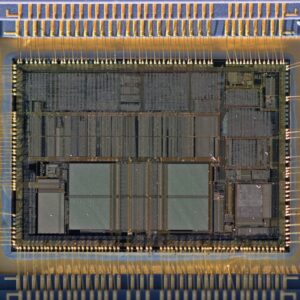When shipping a PC, several factors influence the cost. The package’s weight and dimensions are primary determinants, with heavier and larger packages generally incurring higher fees. Distance is another crucial factor, as domestic shipping is typically less expensive than international shipping.
The chosen shipping method also affects the cost, with ground shipping usually being the most economical option, while air and expedited services are more expensive. The PC’s value and the required insurance coverage further impact the overall shipping cost. Understanding these factors is essential for accurately estimating and potentially reducing shipping expenses.
The weight and dimensions of the package significantly influence shipping costs, as larger and heavier items require more resources for transportation and handling. Distance is another key factor, with longer journeys necessitating more time and resources, thus increasing costs. The selected shipping method also plays a role in determining expenses, with ground shipping being the most cost-effective option compared to air and expedited services.
Additionally, the PC’s value and the level of insurance coverage needed contribute to the total shipping cost. By considering these factors, shippers can make informed decisions to optimize costs while ensuring the safe delivery of their PC.
Key Takeaways
- Shipping costs are affected by factors such as distance, weight, dimensions, and shipping speed.
- Ground shipping is generally the most cost-effective option, while air and expedited shipping are faster but more expensive.
- Packing your PC efficiently can help minimize shipping costs by reducing the weight and dimensions of the package.
- Hidden fees and additional charges to watch out for include fuel surcharges, residential delivery fees, and insurance costs.
- Negotiating shipping rates with carriers can lead to cost savings, especially for regular or bulk shipments.
Comparing Shipping Options: Ground, Air, and Expedited
Ground Shipping: A Cost-Effective Option
Ground shipping is typically the most cost-effective option for shipping a PC. It may take longer than air or expedited shipping, but it is generally reliable and offers good value for money.
Air Shipping: Fast but Expensive
Air shipping is faster but comes with a higher price tag. This option is ideal for those who need their PC to arrive quickly, but it may not be the most economical choice for all shipments.
Expedited Shipping: The Fastest but Most Expensive Option
Expedited shipping offers the fastest delivery time but is also the most expensive option. It is best suited for urgent shipments that require immediate delivery. By comparing these shipping options, shippers can make an informed decision based on their budget and delivery timeline.
Tips for Packing Your PC to Minimize Shipping Costs

Proper packing is essential when shipping a PC to minimize the risk of damage and reduce shipping costs. Start by using a sturdy box that is large enough to accommodate the PC and packing materials without being too big, as oversized boxes can result in higher shipping costs. Use ample cushioning materials such as bubble wrap or foam to protect the PC from impact during transit.
Secure all components inside the PC case to prevent them from shifting during shipment. Additionally, consider removing any non-essential components such as graphics cards or extra drives to reduce weight and minimize the risk of damage. Finally, seal the box securely with high-quality packing tape to ensure that it stays closed during transit.
By following these packing tips, shippers can minimize the risk of damage and reduce shipping costs when sending a PC. Proper packing is crucial when shipping a PC to minimize the risk of damage and reduce shipping costs. Start by selecting a sturdy box that is large enough to accommodate the PC and packing materials without being excessively large, as oversized boxes can result in higher shipping costs.
Use generous amounts of cushioning materials such as bubble wrap or foam to protect the PC from impact during transit. Secure all components inside the PC case to prevent them from shifting during shipment. Additionally, consider removing any non-essential components such as graphics cards or extra drives to reduce weight and minimize the risk of damage.
Finally, seal the box securely with high-quality packing tape to ensure that it remains closed during transit. By following these packing tips, shippers can minimize the risk of damage and reduce shipping costs when sending a PC.
Hidden Fees and Additional Charges to Look Out For
| Fee Type | Description |
|---|---|
| Service Fee | An additional charge for using a particular service or feature. |
| Transaction Fee | A fee charged for each transaction made, such as a purchase or withdrawal. |
| Annual Fee | A yearly charge for maintaining an account or membership. |
| Overdraft Fee | A penalty fee for withdrawing more money than is available in the account. |
| Foreign Transaction Fee | An extra charge for making purchases in a foreign currency or outside the country. |
When shipping a PC, it’s important to be aware of potential hidden fees and additional charges that can impact the total cost of shipping. Some carriers may impose surcharges for residential delivery, fuel, or handling large packages. It’s essential to inquire about these potential fees upfront to avoid any surprises when it comes time to pay for shipping.
Additionally, shippers should be mindful of packaging requirements set by carriers, as failing to meet these standards can result in additional fees. It’s also important to consider customs duties and taxes when shipping internationally, as these can significantly increase the total cost of shipping a PBy being aware of these potential hidden fees and additional charges, shippers can accurately estimate the total cost of shipping and avoid unexpected expenses. When shipping a PC, it’s crucial to be mindful of potential hidden fees and additional charges that can impact the total cost of shipping.
Some carriers may impose surcharges for residential delivery, fuel, or handling large packages. It’s essential to inquire about these potential fees upfront to avoid any surprises when it comes time to pay for shipping. Additionally, shippers should be aware of packaging requirements set by carriers, as failing to meet these standards can result in additional fees.
It’s also important to consider customs duties and taxes when shipping internationally, as these can significantly increase the total cost of shipping a PBy being aware of these potential hidden fees and additional charges, shippers can accurately estimate the total cost of shipping and avoid unexpected expenses.
Negotiating Shipping Rates with Carriers
Shippers can often negotiate shipping rates with carriers to secure better pricing for sending a PIt’s beneficial to compare rates from multiple carriers and leverage this information when negotiating with a preferred carrier. Shippers should also consider establishing a long-term relationship with a carrier to potentially receive discounted rates based on their shipping volume. Additionally, bundling multiple shipments or committing to regular shipments with a carrier can lead to lower rates.
Shippers should not hesitate to inquire about available discounts or promotions that could help reduce their shipping costs. By negotiating shipping rates with carriers, shippers can potentially secure better pricing and save on the cost of sending a PC. Shippers have the opportunity to negotiate shipping rates with carriers in order to secure better pricing for sending a PIt’s beneficial to compare rates from multiple carriers and leverage this information when negotiating with a preferred carrier.
Shippers should also consider establishing a long-term relationship with a carrier to potentially receive discounted rates based on their shipping volume. Additionally, bundling multiple shipments or committing to regular shipments with a carrier can lead to lower rates. Shippers should not hesitate to inquire about available discounts or promotions that could help reduce their shipping costs.
By negotiating shipping rates with carriers, shippers can potentially secure better pricing and save on the cost of sending a PC.
Tracking and Insurance: Ensuring the Safe Arrival of Your PC

Monitoring Your Shipment with Tracking Services
Tracking services are essential for monitoring the progress of your shipment and anticipating its arrival time accurately. This information can be valuable in addressing any potential delays or issues that may arise during transit.
Protecting Your Investment with Insurance
Securing insurance for your shipment provides financial protection in case of loss or damage during transport. While carriers typically offer basic liability coverage, it’s crucial to consider purchasing additional insurance based on the value of your PC to ensure comprehensive protection.
Peace of Mind with Tracking and Insurance
By utilizing tracking services and securing insurance coverage, you can have peace of mind knowing that your PC is protected throughout its journey. This combination of services allows you to stay informed about your shipment’s progress and ensures that you’re financially protected in case of any unexpected events.
Calculating the Total Cost of Shipping: A Step-by-Step Guide
Calculating the total cost of shipping a PC involves considering various factors such as weight, dimensions, destination, chosen shipping method, packaging materials, potential surcharges, customs duties (for international shipments), insurance coverage, and any negotiated rates or discounts obtained from carriers. Start by determining the weight and dimensions of the package and selecting an appropriate shipping method based on budget and delivery timeline requirements. Consider packaging materials that provide adequate protection while minimizing size and weight to reduce shipping costs.
Inquire about potential surcharges from carriers and factor in customs duties for international shipments if applicable. Additionally, secure insurance coverage based on the value of the PC and negotiate rates or discounts with carriers if possible. By carefully considering these factors, shippers can accurately calculate the total cost of shipping their PC and make informed decisions to minimize expenses.
Calculating the total cost of shipping a PC involves considering various factors such as weight, dimensions, destination, chosen shipping method, packaging materials, potential surcharges, customs duties (for international shipments), insurance coverage, and any negotiated rates or discounts obtained from carriers. Start by determining the weight and dimensions of the package and selecting an appropriate shipping method based on budget and delivery timeline requirements. Consider packaging materials that provide adequate protection while minimizing size and weight to reduce shipping costs.
Inquire about potential surcharges from carriers and factor in customs duties for international shipments if applicable. Additionally, secure insurance coverage based on the value of the PC and negotiate rates or discounts with carriers if possible. By carefully considering these factors, shippers can accurately calculate the total cost of shipping their PC and make informed decisions to minimize expenses.
In conclusion, understanding the factors affecting shipping costs is essential for accurately estimating and minimizing expenses when sending a PComparing different shipping options allows shippers to make informed decisions based on their budget and delivery timeline requirements. Proper packing techniques help minimize damage and reduce shipping costs while being mindful of potential hidden fees and additional charges ensures an accurate estimation of total shipping expenses. Negotiating rates with carriers can lead to better pricing while tracking services and insurance coverage provide peace of mind regarding the safe arrival of a shipped PFinally, calculating the total cost of shipping involves considering various factors such as weight, dimensions, chosen method, packaging materials, potential surcharges, customs duties (for international shipments), insurance coverage, and any negotiated rates or discounts obtained from carriers.
By carefully considering these factors and following best practices for packing and negotiating rates with carriers, shippers can minimize expenses while ensuring that their PC arrives safely at its destination.
If you’re interested in learning more about the cost of shipping a PC, you should check out this article on The Meta Rush. They provide valuable insights into the factors that can affect shipping costs for PCs and offer tips on how to save money on shipping. It’s a great resource for anyone looking to ship a computer and wants to understand the potential costs involved.
FAQs
What factors determine the cost of shipping a PC?
The cost of shipping a PC is determined by factors such as the size and weight of the package, the shipping distance, the shipping method, and any additional insurance or special handling requirements.
How much does it cost to ship a PC domestically?
The cost of shipping a PC domestically within the United States can range from $20 to $100, depending on the factors mentioned above.
How much does it cost to ship a PC internationally?
Shipping a PC internationally can cost anywhere from $50 to $300 or more, depending on the destination, shipping method, and any customs or import fees.
Are there any additional costs to consider when shipping a PC?
Additional costs to consider when shipping a PC may include insurance for the package, special handling fees for fragile items, and any customs or import fees for international shipments.
What are the different shipping methods available for shipping a PC?
The different shipping methods available for shipping a PC include ground shipping, air shipping, expedited shipping, and freight shipping for larger and heavier packages. Each method has its own cost and delivery time.





